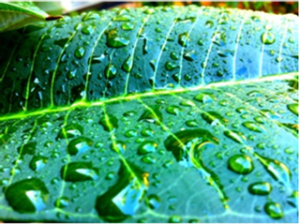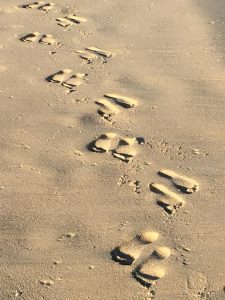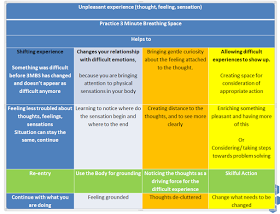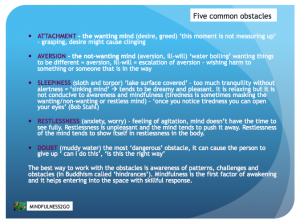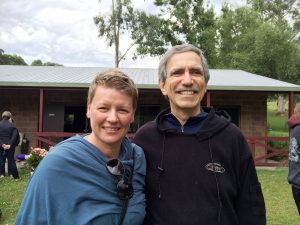
This post is about how I have met James Baraz – the co-founder of Spirit Rock Meditation Center in California (https://www.spiritrock.org/), the founder of THE AWAKENING JOY program (https://www.awakeningjoy.info/) and the co-author of AWAKENING JOY (https://www.amazon.com/Awakening-Joy-10-Steps-Happiness/dp/1937006220).
This post is also an invitation to sign up for his Perth workshop in November 2018 (more info at the end of this post).
I have met James Baraz during a retreat in the YARRA Valley in Victoria (Australia) at the end of 2014. James Baraz and Jill Shepherd co-led this insight retreat in this magnificent landscape close to Melbourne.
After arriving at the retreat venue and being allocated a bed in a shared room of five people and moving in for the next seven days, I noticed a little bit of exhaustion, nervousness and tension in my body. For one, it was simply the tiredness after such a long travel (flight Perth to Melbourne, then 2hrs care drive) and two, adjusting to sharing a room with four other people, and three, not knowing what this retreat would be like.
I had a very tough year claiming a lot of grief, tension and heaviness in my mind and body. I must admit I was craving for some quiet, for recollection, rejuvenating and greater clarity. There could have not been a better time for this retreat. I felt it was the right space for me to review and conclude 2014 with kindness, embodiment and ease.
Once settled into my accommodation, I went for a little wonder exploring other facilities like the meditation hall, the garden and the walking path.
And then I met James Baraz. A dharma teacher, who was greeting and meeting everyone briefly with a huge smile in his face, with a few words of welcome and love, with an open heart making everyone feeling special and cared for. I have met many dharma teachers, all carrying, humble and loving, but there was something very special about James. Maybe it was his genuine and authentic, very natural and heart warming welcome, his offering of an exchange of loving words and HIS BIG SMILE … Meeting James in this very moment and being in his presence made me feeling very special and safe. I knew right then that he would be there anytime in case my mind, or heart, or body or all together would fall apart during the retreat. Time to relax J
In his daily dharma talks James was speaking about awareness, gratitude, forgiveness, love, joy, compassion, mindfulness, wisdom realities, equanimity and taught us every day a little more on how to apply all these aspects in relation to each moment of our existence. He spoke about the dance of awareness where everything noticing intention comes before action, so one moment to another can string together and dance in a flow.
James spoke about the relationship between wisdom and compassion and the four sublime states of Brahma Vihara: loving- kindness, compassion, joy and equanimity. He talked about the willingness and capacity to face and embrace suffering and acknowledged the amount of courage and compassion this would take. Both, compassion and joy combined and in full balance leads to equanimity, a balanced and non-reactive mind.
James guided us through many shorter and longer practices of Brahma Vihara. Here a re a few examples to recite and cultivate self-compassion by practicing this on a regular basis (and if it feels right placing the left hand over your heart region or any other body part during the practice)
In this moment there is suffering.
Suffering is part of life.
May I hold it in kindness and compassion.
**
I am aware of this pain.
I care about this pain.
At the right time may this pain release.
May I know peace.
**
May I hold my experience with balance and ease.
It is as it is.
Life is unfolding as it should.
It is like this.
Right now.
**
The profound richness and depth of James teachings have offered me a lot of insight, and it indeed made me feeling much happier and joyful at the end of this silent retreat. I’d gained new perspectives in relation to a few issues that had caused me so much suffering during the year. And returning from the retreat offered me an opportunity to conclude a few chapters of pain with compassion and forgiveness. Something I thought would not have been possible at all. However, in the end it was so very liberating and freeing.
Reflecting back on my retreat experience and of James in particular makes me smiling, remembering what he often said at the very end of each day: ‘DON’T MISS THE MOMENT’ and a few other encouragements like ‘Stop and start again. That is always an option’, ‘Peace is always within’, ‘Don’t cure, but care’ and last, but not least ‘You don’t have to figure it out’.
James and his wife Jane Baraz are visiting Australia in 2018. Please check workshop and retreat dates online and see whether you can attend.
About James and Jane Baraz
James Baraz has a master’s degree in psychology and has been a mindfulness meditation teacher since 1978. He is a co-founding teacher of the prestigious Spirit Rock Meditation Center in California, is a guiding teacher for One Earth Sangha (a website devoted to expressing a Buddhist response to climate change), has taught at the Esalen Institute since 1983, and has led retreats and workshops throughout North America and Europe for more than 30 years. In addition, he created the Awakening Joy course in 2003 and is the co-author of Awakening Joy: Ten Steps to Happiness, the book based on the course. He is also the co-author of Awakening Joy for Kids, which won the 2016 Nautilus Parenting and Family Gold Award. James lives in Berkeley, California, with his wife, Jane. He has two sons and three grandchildren. For more information, please visit www.awakeningjoy.info
Jane Baraz, MA, is an instructor of Mindfulness-Based Stress Reduction (MBSR) at the University of California Medical Center. She has been meditating since 1976 and is a founding board member of Spirit Rock Meditation Center. Jane completed professional training in MBSR with Jon Kabat-Zinn and is also a trained teacher in Mindful Self-Compassion. She teaches for both the community at large and for a special National Institute of Health study to investigate whether mindfulness can slow down cognitive decline in patients suffering from HIV. In addition to teaching at the medical center, Jane teaches courses and weeklong retreats at Spirit Rock Meditation Center, The Cancer Support Community, and in Europe and Australia. Jane enjoys bringing a friendly, gentle attitude to meditation practices and infuses her teaching with guidance for bringing more self-compassion into our lives.
